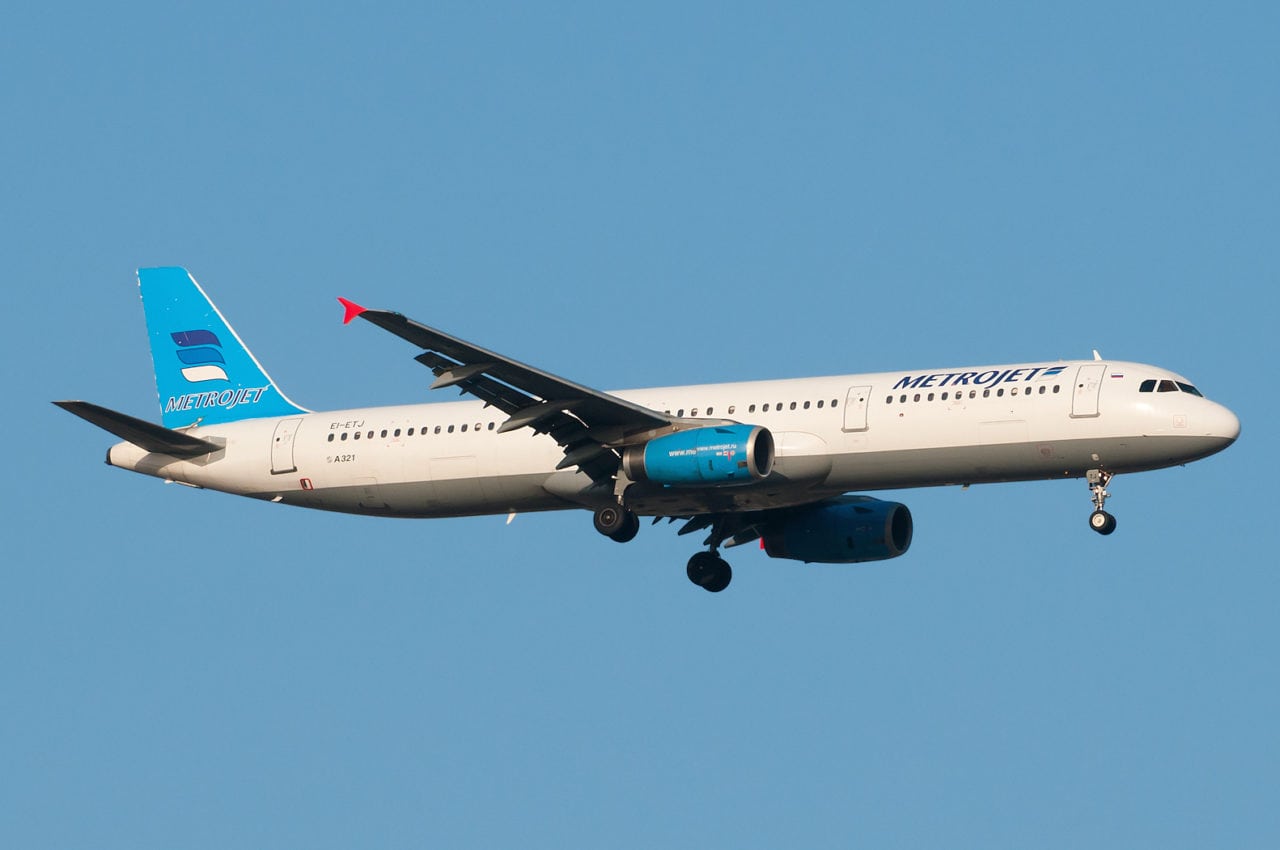[Avionics Today 11-02-2015] An Airbus A321-200 carrying 224 passengers and crew en route from Sharm el-Sheikh, Egypt to St. Petersburg, Russia reportedly broke apart in the air at cruising altitude over Egypt’s Sinai Peninsula on Saturday, Oct. 31. Operations for the Russian state-owned airline Kogalymavia, which goes by the name of Metrojet, have been temporarily suspended to assess the risks of maintaining an acceptable level of safety, according to the airline.
 |
| The aircraft involved in the Metrojet 9268 crash. Photo: Flightradar24 |
There is still much speculation surrounding the incident, but Russian officials are as of yet attributing the event to a mechanical “impact” and not to the fault of the pilot, Nemov Valery, who they say had thousands of hours of flight experience, or to a terrorist attack. Web-based flight tracking service FlightRadar24 recorded the aircraft climbing to 33,500 feet before pilots indicated an incident with aircraft systems and reportedly looked to divert the flight, at which point the aircraft dramatically lost altitude, disappearing from radar screens just 23 minutes into the flight.
“For an airplane to come apart in the air like the Metrojet flight, it would have to be something to do with the controls as far as the pitch axis of the airplane, which would be the elevators and the stabilizers,” said Ken Qualls president of news, operations and sales for TransMedia Aviation. “In today’s world, with the advanced technology and avionic systems flying on aircraft, it would have to be some type of irregular error in the system of the airplane to allow that to happen.”
Alexander Smirnov, the deputy general director of Metrojet, told reporters on Monday that the crash could not have been a technical fault, however, and that the crash “could only have been a mechanical impact on the plane,” the Associated Press reported. Officials have since located and are in the process of analyzing the Cockpit Voice Recorder (CVR) and Flight Data Recorder (FDR). Meanwhile, Smirnov maintains a technical fault could not have caused the damage sustained by the aircraft that caused it to come apart in the air.
“There are no such faults, like engine failure, system failure, no such combination of systems failure that could lead to a plane breaking up in the air,” Smirnov told reporters at a press conference regarding the incident today. Smirnov points instead to “some mechanical or physical impact” on the aircraft.
Metrojet insists that all forms of pre-flight maintenance inspections have been performed on time and in full through the airline’s own station and line maintenance.
“All Airlines aircraft must undergo pre-flight inspection. Based on the results of inspections of aircraft for the airline [Safety Assessment of Foreign Aircraft] SAFA program in the airports of the participating countries of the European Civil Aviation Conference and state inspectors at airports in Russia and CIS security level, was 0.67 at the maximum allowable value of the safety factor – 2.0,” Metrojet said in a statement on its website regarding the aircraft involved in the crash.
Despite these claims, Qualls is skeptical that maintenance records can be kept in order for aircraft such as the A320 involved in the incident, which had performed more than 21,000 flights for a total of about 56,000 flight hours and had been previously leased to several airlines.
“This particular aircraft has been passed around through the Middle East and with several leases. When you do that, it becomes very, very difficult to track the maintenance of the airplane. You can track the hours and you can track the cycles, but you don’t know who has been working on that airplane, so the maintenance standards take a hit,” said Qualls.
Moreover, as global economies improve and expand over the next several years, personnel demands will skyrocket to 609,000 maintenance technicians in the next 20 years, according to Boeing’s latest market forecast. According to Qualls, it is becoming a challenge to provide proper training and experience to maintenance technicians in an environment of booming growth.
“This is a concern with the growth of aviation. We have exceeded expectations in the world of aviation dramatically, where there are not enough pilots, we don’t have enough qualified mechanics, we don’t have qualified line service personnel. There are many things that are void. The technology aspect is just running away with the improvement aspect of preparation of training,” said Qualls. “You have a huge risk factor there.”
While Qualls stresses the need to be more stringent with aircraft maintenance going into the future, he also looks to the aviation ecosystem at large that he feels fell short.
“As a pilot and a passenger, once you’re sitting there in the aircraft, you’re putting your faith in systems, and the system let them down somehow,” said Qualls.